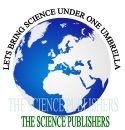Vet. Letters
Guidelines for Authors
This peer reviewed international journal publishes review articles, original research papers, and short communications. The submitted articles should not be published and/or considered for publication elsewhere in the world in any form. Further, it is considered that all the authors named in the manuscript are agreed with manuscript contents and are responsible for the validity as well as originality of data. The journal administration is not or will not be supposed to agree with scientific contents and data therein published in the manuscripts. The submitted manuscripts are being evaluated for Similarity Index using appropriate software so the authors must take care of plagiarism while copying text from other articles and materials. It is assumed that the submitted work has been conducted in accordance with the biological welfare laws acceptable worldwide and/or laws of the country where the work was undertaken; however, the journal management has the right to reject any manuscript where there is enough reason to believe that necessary laws and procedures have not been followed. The copyrights of the published manuscripts belong to the journal/publisher. All the submitted contributions are subjected to the panel of editors for revision. Furthermore, editor and/or editorial board's decision regarding manuscript acceptance/rejection will be final and can't be challenged anywhere.
Regular Articles
Articles should be as concise as possible; however, it should not exceed 4-6 pages of the journal (12-18 pages with double space including figures and tables of word document). The submitted articles should be divided into the following sections:
(a) Abstract of approximately 100 - 200 words describing clearly but briefly about background, methodology, results, and conclusion. The key words (3 - 6) should also be indicated at the end of abstract. (b) Introduction stating clearly the purpose of work done with some review of literature. (c) Materials and Methods (d) Results (e) Discussion/ Results and Discussion section can be combined if necessary. (f) Acknowledgements (g) References (h) Tables and figures must be arranged at the end of the manuscript.
Short Communications
Short communications should be concise containing about 3 pages of the Journal, (9 pages of word document with double space, including illustrations, tables and references). An abstract of 100 - 150 words should be included. The short communication should not include any heading or sub- heading. Only abstract should be separated from the rest of write up. The total number of references should not exceed more than twenty.
Reviews
Review articles are also welcomed. Authors should have background of the work and are encouraged to consult the editor in advance before submission. References of the books should be avoided in writing the review articles. The article must include introduction, appropriate headings in the text and conclusion. It is the responsibility of the authors to ensure that about 40 - 60% of the references should be within five years of relevant work for each form of publication and the submitted manuscripts comply with journal format.
Online submission
Authors should submit their manuscript on the following Email address: [email protected].
Title Page
The title page should include: A concise and informative title, the name(s) of the author(s) in the order of appearance in the manuscript with the affiliation(s) and address (es) of the author(s), The e-mail address, telephone and fax numbers of the corresponding author*. Additional author notes if any.
Your manuscript will be peer reviewed anonymously, so please ensure it don't include any details revealing your identity in the text or any of attachments except title page.
Text Formatting
Only manuscript written and submitted in Word (2003-2010) is acceptable. It should have 2.5 inch margin on each side of the page with numbered lines. Use a normal, plain font (e.g., 10-point Times Roman) for text. Italics may be used to emphasize on certain points. Automatic page numbering (bottom right) should be used to number the pages in manuscript. Avoid using field functions. For indent, use tab stops or other commands, not the space bar. To make tables, use the table function, not spreadsheets. Use the equation editor for MathType for equations.
Headings
Please avoid using more than three levels of displayed headings.
Symbols and Abbreviations
With respect to symbols in the manuscript, System International (SI) should be used. Abbreviations should be defined at first mention and used consistently thereafter.
Footnotes
Footnotes to the text are numbered consecutively; those to tables should be indicated by superscript lower-case letters (or asterisks for significance values and other statistical data).
Acknowledgments
Acknowledgments of people involved, national or international grants and/or funds, etc. should be placed in a separate section (both in regular article and short communications) before the reference list. The names of funding organizations should be written in full, abbreviation should be avoided.
References
The typescript should be carefully checked to ensure that the spelling of the author's names and dates are exactly the same as mentioned in the reference list. In the text, the references should be cited as number with brackets at the end of sentence or after the author name before full stop. For example; similar results were reported earlier [1]. or [1, 2]. The results indicated by Raza et al. [12] support…… All the references cited in the text should be written at the end of manuscript as cited in the text not alphabetically. At the end, references should be written as follow:
Reference to a journal publication:
[1] Van der Geer J, Hanraads JAJ, Lupton RA. The art of writing a scientific article. J Sci Commun 2010;163:51-9.
Reference to a book:
[2] Strunk Jr W, White EB. The elements of style. 4th ed. New York: Longman; 2000.
Reference to a chapter in an edited book:
[3] Mettam GR, Adams LB. How to prepare an electronic version of your article. In: Jones BS, Smith RZ, editors. Introduction to the electronic age, New York: E-Publishing Inc; 2009, p. 281-304.
Reference for proceedings
[4] Lowe KF, Hamilton BA. Dairy pastures in the Australian tropics and subtropics. In: Murtagh GT, Jones RM, editors. Proceedings of the 3rd Australian conference on tropical pastures, Rockhampton, 1986, p. 68-79.
Note: If there are more than 6 authors than the first 6 should be listed followed by 'et al.'
Tables
Arabic numerals should be used to number the tables. Tables should always be cited in text in consecutive numerical order. Begin each table caption with a label "Table 1:" Footnotes to tables should be indicated by superscript lower-case letters and included beneath the table body. The vertical lines should not be used.
Figures
The figure caption should begin with a label "Fig. 1:" and an overall descriptive statement of the figure followed by additional text. o The figure caption should be written immediately after each figure. Figure parts should be indicated with capital letters (A). Figures should always be cited in text in consecutive numerical order. Borders around figures should not be used.
Supplementary Materials
This section includes the text of the Supplementary Materials, which can include figures, tables, material and methods part. Supplementary material can be provided in the same manuscript file at the end of manuscript after tables and figures.
Art work and Illustrations
The art work and relevant illustrations are encouraged to submit in an electronic format. Soft copy of all illustrations/graphs prepared should be provided in Excel to adjust quality and size. JPEG or TIFF format should be used for figures along with appropriate size letter and numerals. The size of letter and numerals should be of consistent size in all the illustration or figures along with caption. MS office files are also acceptable. Captions should be numbered in Arabic and typed separately from the illustrations. Each provided figures/illustrations should not be embedded in text. The illustration/photographs will be published in black and white; however, if required, color printing facility is provided to authors on payment basis. For details, contact the editorial office; the detail is available on website.
Potential reviewers
While online submission, the authors are requested to provide 2 - 4 potential relevant reviewers with their complete details (designation, institute, postal address, telephone, fax and official e-mail address). After initial review by the journal management, the manuscript may be sent to few of the given reviewers; however, the publication largely depends upon the response of reviewers and time taken by them in reviewing the manuscript.
Proofs
Upon satisfactory revision and acceptance, the proofs will be sent to authors for correction through E-mail, if required. The authors are requested to return the manuscript with minor changes within a week time.
Reprints
As the journal is available online, no hard copy will be provided to the corresponding author on publication of his/her manuscript. The manuscript will be available freely from net where it can be downloaded from anywhere. However, if required, the colored prints will be available upon payment.





